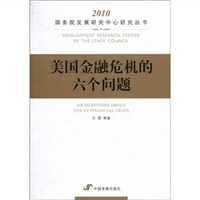Six Questions about the US Financial Crisis
Aug 06,2014

Author: Fang Jin
ISBN: 978-7-80234- 565-2
Publisher: China Development Press
Publication date: 7/2010
Why do financial crises occur again and again? Why were they seldom seen over the 30 years before the 1970s but occurred one after the other for the 30 years after the 1970s? Is the US Federal Reserve’s cheap money policy the reason for this financial crisis? What is the relationship between global imbalance and financial crisis? Why did this financial crisis break out in the US instead of other countries whose macroeconomic policies were as loose as the US and who had serious real estate bubbles? Since asset bubbles are so harmful, should the government control asset prices at the macroeconomic level?
It has been three years since the US financial crisis started with the outbreak of the subprime mortgage crisis. Opinions on the causes vary sharply, possibly because it has not come to an end or is too complex. The book, from the perspective of a theoretical framework of the financial crisis, tries to explain the financial crisis with the Minsky model, and it analyses the background of US asset price bubbles and the institutional basis for systemic financial risk accumulation on a macro and micro basis.
The book thinks that the fundamental cause of the US financial crisis lies in its microeconomic system. Financial deregulation brought about the overflow of financial innovation, a lack of financial supervision, and deterioration of principal-agent problems, which increased risks and fragilities in the US financial system. It also led to the decline in home prices, which finally triggered a huge financial crisis. The macroeconomic factors, such as the country’s cheap money policy and global imbalance, are not the real reasons for the crisis.














